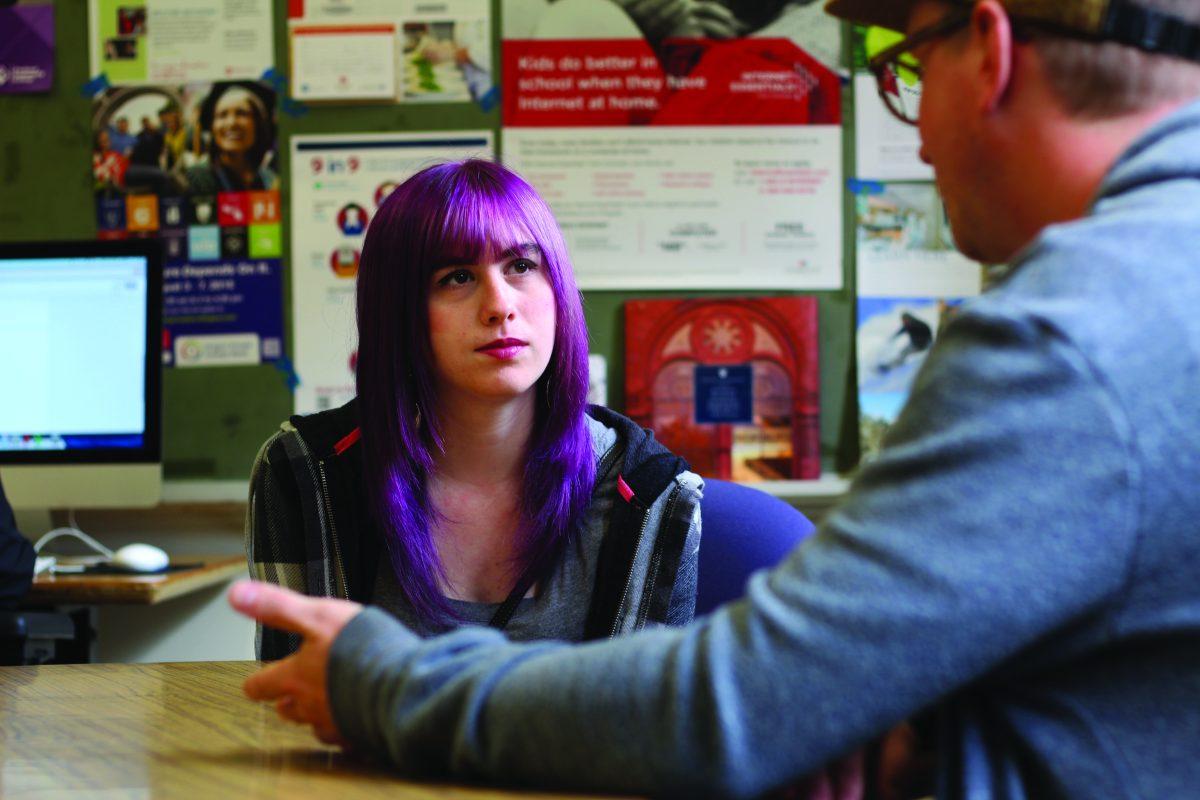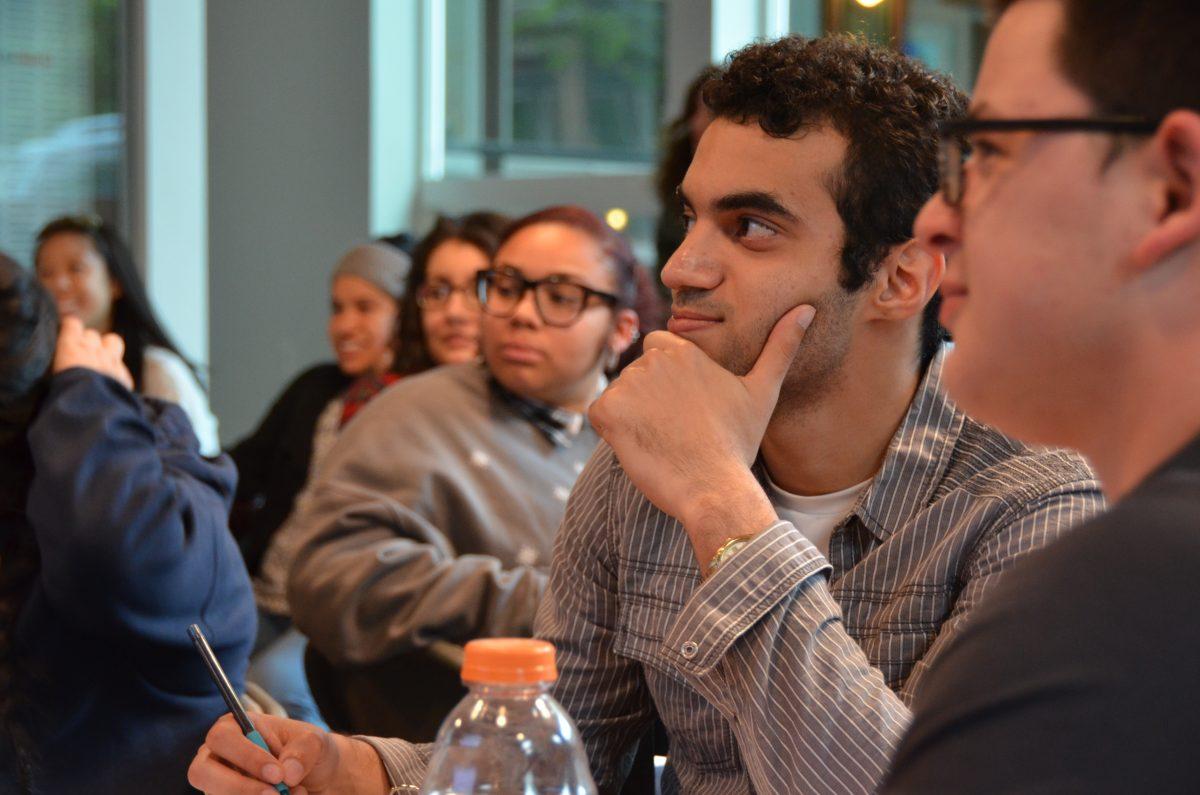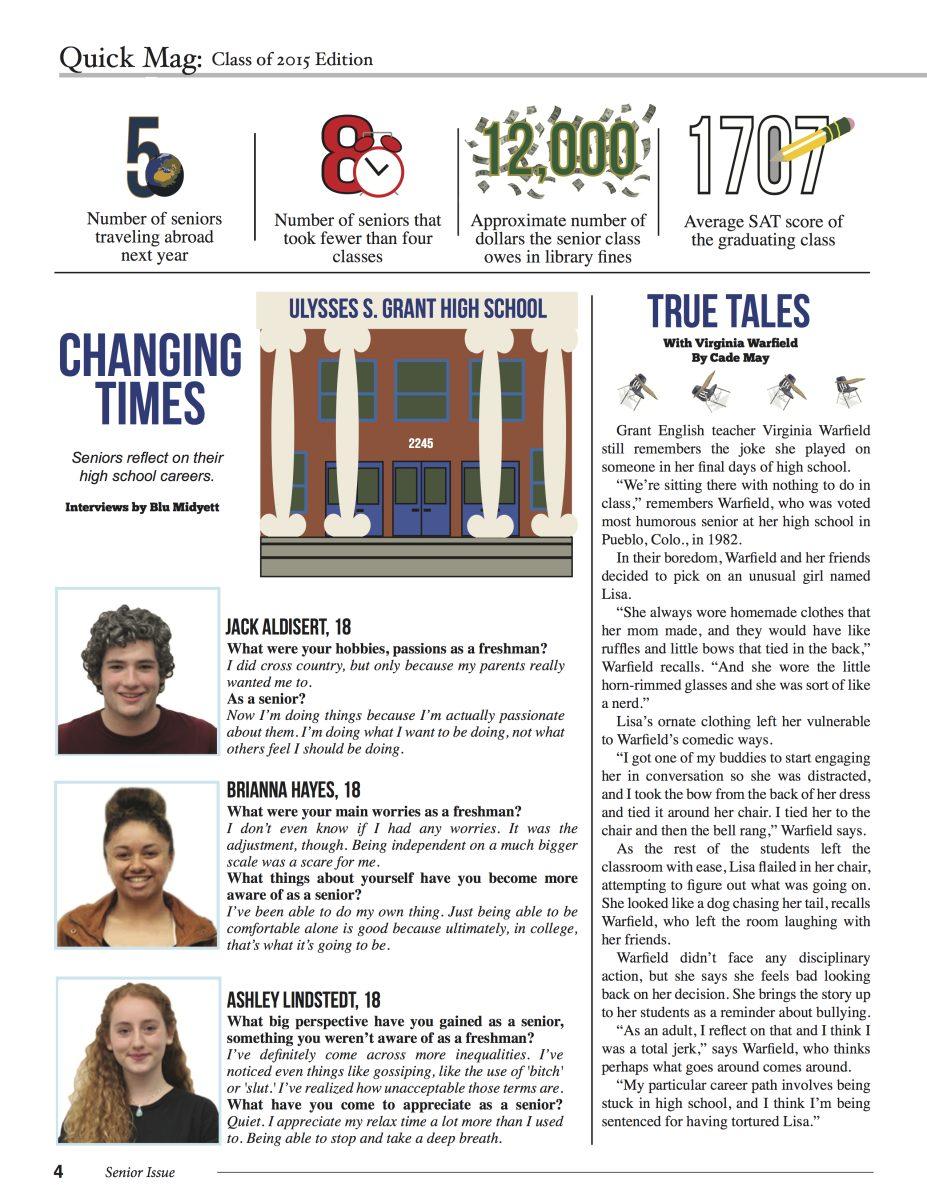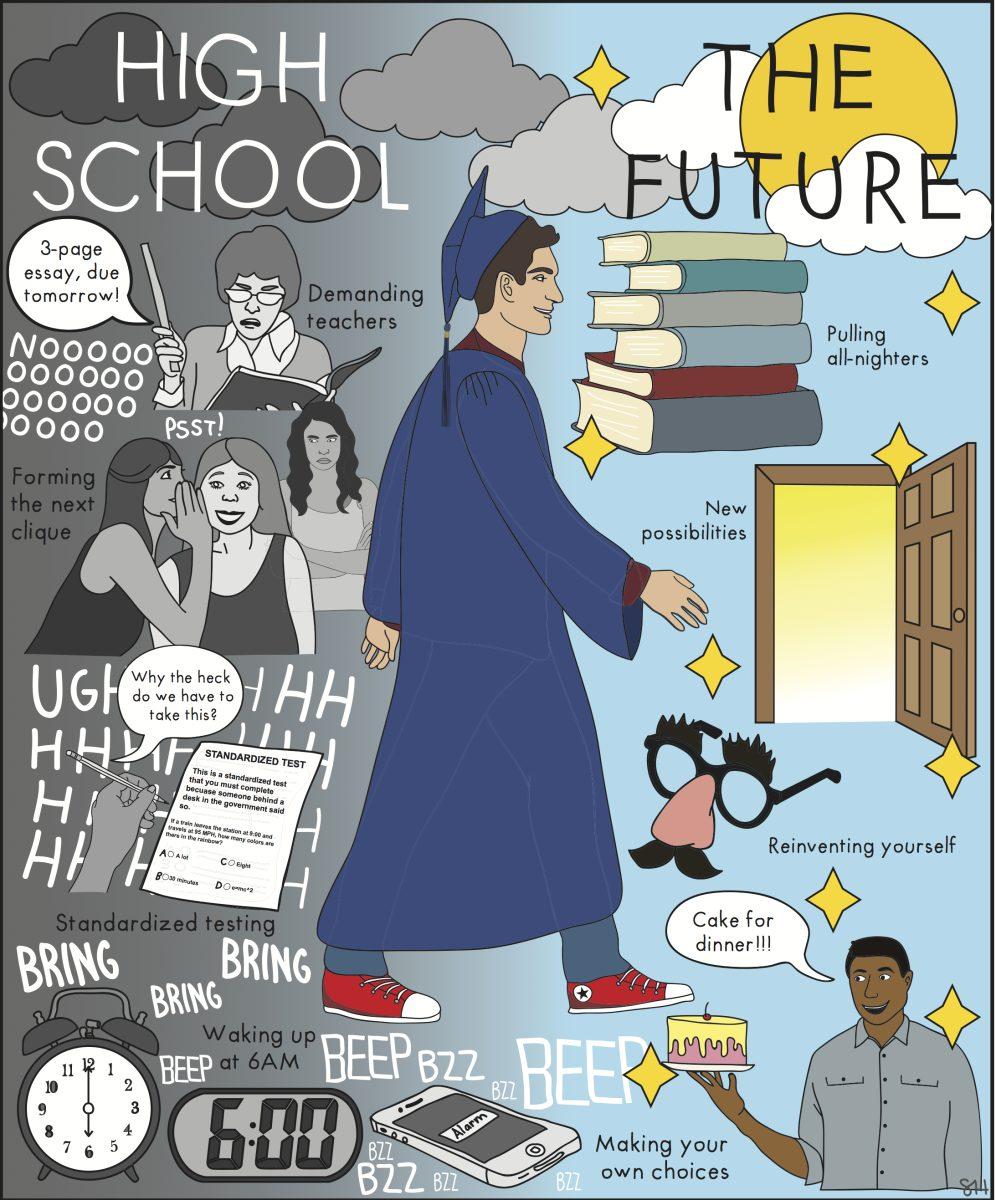
The lunch bell rings on a Wednesday morning at Grant High School. The halls are bustling with students rushing off to meet up with friends for lunch.
In room 130, the school’s Career Coordinator, Madeline Kokes, introduces senior Maddy Close to a former colleague of hers, Jason Sturgill.
Sturgill is a Portland-based illustrator and graphic designer, as well as an adjunct instructor at Portland State University. Kokes and Sturgill were formerly colleagues at Wieden+Kennedy, a world-renowned advertising firm.
“I just wanted to connect the two of you, because you’re so well connected in the design community,” Kokes says, turning to Sturgill. “Maddy is a senior, graduating this year; graphic designer, and working on your book probably, right?”
“Yeah, my portfolio,” Close tells him.
Just like the carefully edited design projects in Close’s portfolio, much of high school is spent in preparation for the years after graduation – the “real world.” Standardized tests are taken, career days are attended and the pressure to decide on a future is imminent.
In 2014, the U.S. Bureau of Labor Statistics said that nearly 66 percent of high school graduates enrolled in college the next year. Higher education can be a valuable experience, but it’s not always the right fit for everyone.
For Close and others like her, college isn’t necessarily the automatic choice. She’s choosing to bypass the chance at attending the typical four-year route through college because she wants to get a jumpstart in the workforce as a graphic designer. It won’t be easy.
“I find that most people who (don’t attend college) are going to find that they’re going to hit a glass ceiling at some point,” says Grant guidance counselor Tearale Triplett. “I would always endorse that there’s some type of training after high school, if it’s college-related or not.”
Close doesn’t see it that way. “If I went to college now and planned to stay there for a couple years, then that’s all this time I’m wasting not trying, not getting straight to it,” she says.
Close already does freelance work for one of her mother’s co-workers. In that role, she edits medical training videos and gets paid $300 per job. After a few jobs, she had learned to take criticism from clients. “You can send off the video who knows how many times, and they’ll find something wrong with it, and you have to go back and fix it no matter how long that’s going to take you,” Close says.
She has always had a talent for art and design, creating storybooks as a child in which she wrote and illustrated herself. “It’s almost like escapism,” says Close. “It just made me feel good and I was good at it.”
As a child, she would often challenge her parents to drawing contests. “I always wanted everything to be a competition,” recalls Close. “I like to be the best.”
According to her father, Greg Close, she was “smart, funny, introverted, imaginative, mature and gifted. Just a great kid,” he says.
By age 10, she developed a keen interest in graphic design, and had even begun making her own animations. “I used to want to be an animator when I was 10, and then that turned into video editing,” says Maddy Close.
She started her YouTube channel a year later and quickly gained more than 1,500 subscribers. She created short music videos, stringing together vignettes from her favorite animated movies. “It incorporated a lot of design elements, like colors, shapes,” she says. “It’s not just putting clips of a video to music. It’s like creating moving art to music. And that’s where I got into video editing.”
Sydney Aker, Close’s girlfriend, says she is on top of her game. “She has a talent that not a lot of people have,” says Aker. “She’s a fast learner. She knows how to take a situation that she’s never seen before and learn from it.”
Prior to high school, Close saw herself taking on loads of AP classes and going to an Ivy League school for college. However, once she started high school, she says she quickly realized that college was not the right path for her. “I just realized that that’s really not who I am and I was trying to be someone I wasn’t,” she says. “To impress people, I guess.”
As a junior at Grant, Close took Anne Berten’s Graphic Design class, where her design skills blossomed. Close deeply enjoyed the class, focusing in on illustration and design. The more Close designed, the more she began to see herself making it her career.
Near the end of her junior year, Close realized she hadn’t made the impact on Grant she’d wanted to. “I was like, ‘Oh my God, I’m going to leave high school without having any trace of myself in the school!’ I’ve always hidden,” says Close.
In an effort to change this, Close contacted Berten about joining the Grant Yearbook staff. She was readily accepted and has handled all aspects of design from infographics and posters to designing ads. “Now I’m making my mark,” she says proudly.
Close also took Doug Mandell’s Intro to Computer Science class her senior year. Prior to taking the class, she was familiar with HTML, a coding language, and quickly picked up another in CSS. Close says it was in this class that she realized she wanted to pursue web design. “I was like, ‘I’m having a lot of fun doing this, and I could see myself doing this forever,’” she says. “I never really knew what I wanted to do, but when I knew, I knew.”
A self-described introvert, Close says the traditional post-high school college experience does not appeal to her partly because of the social aspect. “I’d rather do it independently if I can,” she says.
Like many other students, she worried about whether the high price of college would be a waste of money. According to the College Board, the average cost of a private four-year college has increased by more than 90 percent since the 2000-2001 school year. It sits currently at $42,419 for tuition, fees and room and board.
“The most successful people in college really want to be there,” says her dad. “Maddy doesn’t want to continue her higher education at this point in her life and is already more mature and responsible than many adults I know.”
Although she is convinced college is not the right path for her, Close is still plagued with worry that her plan will not work out. “At some point, I’m going to have to support myself, so I want this to work out for me because I don’t really know what I would do otherwise,” she admits.
One roadblock she’s hit has been in her search for internships. Many design companies don’t accept interns who aren’t enrolled in college. “I’ve looked at a lot of internships that say, ‘Requirements: you have to be a college student,’” Close says.
She thinks this practice is unfair and that interns should be chosen based on their portfolios, not their academic status.
Teachers, employers and people in the design business have stressed how important it will be for Close to network when she enters the work world. “Having connections is probably the most important thing I could do, even more than having a good resumé,” says Close. ‘”It’s, ‘What connections do you have, who are you talking to, who do you know.'”
That’s why Kokes arranged for Close to meet with Sturgill in the College and Career Center.
“I think networking is important for everybody,” says Kokes. “No matter what you’re doing.”
Not everyone has been supportive of her decision. “I got a lot of, like, ‘No, you have to go to college,’ especially from my grandparents,” who have more traditional values, Close says.
“All I can really say to that, to them, is, ‘Well, this is what I wanna do,’” says Close. “And it might not fit what you think is the right way to do it, but this is the way I have to live my life.” ◊






































